Another semi fictional piece of journalism based on no real knowledge just a press hand out https://uk.yahoo.com/style/10-wildlife-invaders-costing-us-162326506.html
I will deal with the relevant points as we go along. Basically, all of these "problems" are man created so let's get that one out of the way for a start.
Grey squirrels are a familiar sight in the UK, but don’t have many fans - Getty
Invasive alien species are now a £4bn problem in Britain, with more than 2,000 critters and fungi killing trees en masse, causing structural damage to buildings, and prompting clean-up campaigns running into millions of pounds. The extent of the destruction has been revealed in a new report funded by the Department for Environment, Food and Rural Affairs (Defra), which found that the cost of invasive non-native species (INNS) has risen by 135 per cent since 2010.
“We already knew the costs were huge,” says René Eschen, senior scientist at the Centre for Agriculture and Biosciences International (CABI) and lead author of the study.
Still, the scale of the findings – which include an average of 12 new species taking root here each year – have come as something of a “surprise”, Eschen admits. The report adds that ‘there remains a significant gap in our understanding of the size and nature of the economic impacts of INNS… and assessment of the costs are needed to prioritise investment in prevention, intervention and management.’
Here are the 10 most damaging species currently plaguing Britain:
Hymenoscyphus fraxineus (ash dieback)
Although there is currently no cure for ash dieback, it is hoped that a small percentage of the UK’s ash trees are genetically resistant to the disease - PA
This tree-killing fungus wasn’t present in Britain at the time of the last report, yet “all of a sudden, it has become by far the most expensive species [where damage is concerned],” Eschen explains. An Asian import that arrived in the UK in 2012, it tallies £883.5m in annual damage (close to four times the second place saboteur) via major clean-up costs around railways, roads, and other public land.
The disease kills 80 per cent of trees infected, with initial signs including blackened or dead leaves, twigs and live shoots acquiring a purple tinge, and diamond-shaped lesions where older branches join the tree’s trunk. There is currently no cure, but it is hoped that between one and five per cent of the UK’s two billion ash trees are genetically resistant to the disease, meaning they could survive and produce dieback-resistant species in the future.
Japanese knotweed
Japanese knotweed needs to be treated by professionals - Getty
Introduced as an ornamental garden plant in the mid-19th century, Japanese knotweed generates around £246.5m of repair work annually, growing through cracks in areas such as pavements, walls and fences, damaging lightweight structures such as garages and conservatories, lifting pipework, and blocking drains. England is the worst affected country in the UK, accounting for over 80 per cent of cases.
One 2012 study found that its presence reduced a property’s price by between 5 and 15 per cent. Spraying or injecting the stems (with approved herbicides) can get rid of the problem, though it typically takes three years to treat, at a cost of £1,000-£5,000 for a domestic garden. However, Government guidance advises that you don’t attempt to treat knotweed yourself unless you have the appropriate skills and experience, as certain chemicals, for example, require a certificate of competence for use.
Rabbits
They might look cute, but rabbits can cause a huge amount of damage to plants, trees and shrubs - The Image Bank RF
The costliest species in 2010 – causing more than £260m a year in damage to crops – Britain’s rabbits are now not quite as costly, according to the latest report, mainly because viral infections have reduced the size of the wild population. But around £170m in damage is still caused by rabbits each year in the UK. Introduced as pets by the Romans 2,000 years ago, their grazing can kill a number of plant species as well as trees and shrubs (if the bark is gnawed).
The Royal Horticultural Society (RHS) warns that ‘killing rabbits will rarely give more than a short-term reduction in numbers,’ and advises wrapping part-chewed trunks in black polythene to help the area to callus over (along with other rabbit-proofing measures, such as fences), and the use of animal repellents including aluminium ammonium.
Comment: Here we have a problem in that some historians claim that the Normans brought rabbits to the UK in the 11th century. Others argue Roman times. Whichever, after 2000 or 1000 years these are now a native species and to constantly still refer to them as an "invasive species" is to constantly call yourself a fool. The biggest problem is that feral domestic cats will kill rabbits as a food source. However, the biggest hunter of rabbits is the fox and even in the old records it is noted that foxes would bypass easy to take poultry in order to hunt rabbits and when rabbit numbers decline so do foxes. We also have hawks, buzzards and eagles that will take rabbits.
The common factor between foxes, cats and birds of prey is this: humans kill all of them and when you take out the predator the prey animals increase in numbers -as Australia has found with its idiotic policy of feral cat and fox killing resulting in an explosion in the rodent population (mice and rabbits). One day it may sink in to the thick heads and they will realise that predator = prey ("pest") extermination. Work with nature not make excuses to kill it.
Rats and mice
Rodents cause some £84m of damage in England each year - iStockphoto
Edible dormice (Glis Glis) were brought over by the Rothschilds in the early 1900s, brown rats first came to the UK on boats in the 18th century, while house mice arrived on trading vessels during the Stone Age. These rodents are most commonly found in homes, gardens and woodlands, and can cause major damage, often posing a fire hazard by tearing up drywall and insulation, and exposing and chewing through wires. England’s rodent-related damage is three times higher than the rest of the UK, at a total cost of £84m annually. Pest control is vital here and expense depends on the size of the problem; a rat exterminator call-out starts at around £50.
Comment: Again we have a situation where some facts are off. Why did pre 18th century householders have cats to get rid of rats and mice if the rats never arrived until the 18th century? Again, established species like the rat and mouse are no longer "invasive species". But we have the human created problem handled rather stupidly.
Huge amounts of rodenticide are used officially and stupidly in many cases by house holders who have no idea of what they are doing. Hedgehogs, badgers, foxes, domestic pets and even owls and other birds of prey suffer and die from secondary rodenticide poisoning which, by and large, is not killing off rats or mice.
On farms and in towns and cities the rat and mouse is the common prey for foxes and feral cats as well as owls. In the United States some cities have stopped using rodenticide on rat populations as it is not effective and the secondary dangers are there. How have they started to combat rats? Firstly, urban foxes and in some cases coyotes are taking the rats in numbers. The other method -as in Baltimore and Chicago- is to use feral cats that are caught (those that can be rehomed are) but too wild are given health checks and vaccinations and then relocated to areas with large rat populations. Apparently it works. Who could have guessed.
Idea: stop killing the very animals and birds that will reduce the rat problem
Cockroaches
Cockroaches are mostly found in commercial premises where food is handled, and can spread disease - Alamy
The two main types of cockroach found in the UK are the German and the Oriental species, which confusingly hail from southeast Asia and the Black Sea respectively. The £70m worth of damage cockroaches inflict on the UK each year is borne by humans, rather than land or property. They are a significant public health risk, carrying diseases such as salmonella, gastroenteritis and dysentery, and are most commonly found in commercial premises where food is handled, mostly restaurants. Pest control, via chemical killers and bait traps, can eradicate the problem.
Deer
Deer can cause significant damage to trees and crops - iStockphoto
Only two of the six species found in the UK are native: the red and roe deer. Fallow, sika, muntjac and Chinese water deer all come from other shores. Deer can cause substantial damage to woodlands via ‘fraying’ – where males rub bark from the main stem of a tree, leaving it in tatters – ‘thrashing’ (males whipping low branches with their antlers), and ‘browsing,’ when they cause damage to tips and shoots while feeding. Their eating and trampling through crops is especially expensive in the east and south west of England (where cereal crops are planted), with the total annual destruction coming in at £63m. For domestic land, the RHS recommends netting or high fences. As many as 350,000 deer are culled each year on private land.
Comment: Yes, allegedly (no one officially monitors this so let's say that some figures can be "padded out" by certain people). It is also interesting that deer are killed on land where there are no crops. In the past in conversations with estate owners and managers I was told that game keepers are told to shoot any deer -just as they are told to shoot red squirrels and "dispose of badgers on the quiet".
Deer in some parts of the UK were hunted to extinction along with other species and the solution, as always, was to import more from Europe so that hunting could continue. "Officially" there is no UK predator to take down deer although police, farmers and others will note that deer are found that have been taken down by large cats (such as puma and lynx that are in the UK and that is known officially -see Red Paper 2022:Felids).
"Management" of deer, or as they like to call it "harvesting" need not involve killing even if that spoils some persons' 'fun'.
The number of deer species imported into the UK by landed gentry to fill their private menageries and estate grounds where they roamed freely hit a peak in the 17th century and even some dates for when muntjac deer were first introduced are a tad "off". Again, these are all human created problems and we now have to live alongside the various species and bad land management does not help -looking at fencing, etc as employed in Europe is a viable option although killing being 'fun' it seems preferred to spending money to protect "valuable crops".
Grey squirrel
Britain’s grey squirrels could be subjected to birth control on public land, according to the Squirrel Accord - iStockphoto
In 1876, grey squirrels were brought to Britain from North America as an ornamental species to populate the grounds of stately homes. By 1930, however, the level of damage they wreaked – including stripping bark from trees, creating ‘open wounds,’ and destroying maize and fruit crops – was identified, and the practice swiftly stopped. Previously described by conservationist and broadcaster Chris Packham as Britain’s “most unpopular non-native invader,” the population – and the havoc it causes – is most pronounced in England (though Northern Ireland sees double the cost of the damage carried out in Wales and Scotland). The CABI study puts the total bill at £40.5m, though a 2021 report from the Royal Forestry Society warned that disturbed timber, lost carbon revenue and tree replacement will cause £1.1bn in costs over the next 40 years. In the garden, squirrels can be deterred by artificial birds of prey, like owls and falcons, and the damage they do managed by caging fruit trees and pots. For public land, there is a Squirrel Accord, made up of 41 leading conservation and forestry organisations, government agencies and companies, which is considering various measures, such as birth control.
Comment: 1876? That is way off. Grey squirrels were in private collections well before that time and far from having very few "fans" the grey squirrel is quite popular although they can cause damage they are, after all of this time, a native species and there are some 'facts' that need noting.
The Grey is often cited as the squirrel that killed off Red squirrels. This is nonsense and, again, humans trying to find another scape goat. By the 1860s humans and hunting had wiped out the Old British red squirrel. More were imported. Killed o0ff more were imported and some of these imports may have carried diseases and red squirrels have faced and still face extinction. The Grey moved in to towns and cities where it was adaptable enough to live -the Red squirrels having been poisoned, shot or snared out of existence.
Grey squirrels "kill and eat young birds and destroy birds eggs". This is one that the bird watching fraternity loves to throw out as a reason why Greys should be exterminated while the "lovely" Red squirrel should be preserved. Red squirrels have the same dietary habits as Greys and will rob birds nests the same way the Grey does.
The Red squirrel is, even as a 'protected species' (which means nothing on the Blood Island) , trapped and shot on private estates and in forestry for damaging tree bark, etc. as the trees are "commercial" and therefore of far more importance and value than wiping out another species.
And don't think badgers are not killed on private estates along with birds of prey.
Varroa mite
We all know the importance of honey bees, but it seems the varroa mite didn't read the email - Alamy
Infestations of varroa mites, originally found in eastern honey bees in Asia, deplete bee populations, which costs the UK £22.5m each year. When the mites attach themselves to bees, their foraging performance is much reduced, meaning they can’t help to pollinate the 70 species we rely on them for, for food. They can also cause the entire breakdown, and death, of bee colonies. (An infestation last year triggered a bee lockdown in New South Wales, Australia, during which time no honey bees could be moved across the state.)
Monitoring hives, buying mite-resistant honey bee stock, installing small-cell honeycombs (in which it is thought mites struggle to reproduce) or introducing brood breaks (where there are no babies in the nest) can help to clear out early-stage infestations.
Box tree moth
London is particularly prone to box tree moths and their voracious appetite - iStockphoto
Accidentally introduced to the UK from southeast Asia, box tree moths can rapidly overwhelm hedges, eating the plants and leaving a brown skeleton in their wake. Capable of laying hundreds of eggs (larvae) when they find a bush, swathes of caterpillars then chomp at their new environment – a £15.4m defoliation issue that is especially bad in London. Checking box plants often from early spring can prevent the population from growing, according to the RHS; pheromone traps and pesticides may prove necessary for infestation control.
Green spruce aphid
It is possible to treat green spruce aphids with pesticides, says the RHS - Alamy
Native to continental Europe, the green spruce aphid (or elatobium abietinum) is a sap-sucking insect that takes to spruce trees during late autumn to spring, causing discolouration and needle loss. This reduction in needles affects the volume of timber trees produce. Treatment to curb this £14.5m desecration isn’t possible with larger trees (as the whole thing must be treated), but for smaller plants, pesticides should be used in late August or September, according to the RHS, “with a further treatment on a mild, dry day in early February.”
Five species that could be next to invade our shores
Asian hornet
Don’t have nightmares... - iStockphoto
Of the 19 alerts issued by the Non-Native Species Secretariat (NNSS), the vespa velutina is the biggest potential threat to Britain, capable of killing off insects like honeybees (thereby damaging other native species). They spread rapidly in France in 2004, and a number of sightings have been recorded in the UK since 2016. Vigilance is strongly encouraged around major ports in southern parts of England and Wales, particularly during April to November when they are most active (they peak in August/September).
Water primrose
Despite its benign appearance, the water primrose can raise the risk of flooding - iStockphoto
South Africa’s native ludwigia grandiflora has been found in some parts of England and Wales. Having already become a serious pest in countries such as France, where it causes a reduction in native species in water, it also raises the risk of flooding.
Purple pitcher plant
This bog-dwelling visitor from North America has been found growing wild in England and Scotland - iStockphoto
The carnivorous sarracenia purpurea is a bog-dwelling plant native to north America, where “it outcompetes native bog vegetation, may impact on invertebrate communities, and disrupts [the nutrient cycle],” according to the NNSS. Twenty suspected sites where it is growing have been found in England, along with two in Scotland.
American lobster
Our native lobsters could be at risk from these invaders - Alamy
These US and Canadian imports could harm UK lobster stocks, say the NNSS, by carrying disease, competing for resources, and interbreeding. UK guidance is to record suspected sightings of the homarus americanus, and retain them for collection from the Marine Management Organisation.
Carolina fanwort
These aquatic plants could post a threat to our native species - Alamy
A few populations of the cabomba caroliniana, originally found in South America and southern parts of North America, have made it to south east England. While these have yet to become invasive due to the climate, the NNSS warns that they could have “potentially large impacts on native aquatic communities and may also affect aquaculture, damage equipment, and impede recreational activities.”
************************************************************
One has to wonder who is furnishing all the estimates of damage since in the past some data has come through members of pro hunting groups such as the Countryside Alliance and the Game & Wildlife 'Conservation' Trust (the latter despite its name is a pro hunting group) as well as big pest control companies. All of these, obviously, have a vested and biased interest in exaggerating damage and animal numbers.
Invasive plants can be a great problem but here we can look at native plants that are seen as dangerous https://www.gov.uk/guidance/wild-plants-dangerous-invasive-and-protected-species According to DEFRA: "Common ragwort (Senecio jacobae) - the most dangerous injurious weed, and the most commonly reported." And yet, on three occasions I reported a wide area of ragwort to the local environmental office and was told to "report it to the land owner"!! Reported on other occasions as being in gardens people were told to put on gloves, dig the ragwort up and burn it. The attitude always seems to be "Yeah, your problem not ours" and these are the people responsible for monitoring and dealing with invasive plant species??
Interestingly, back in 1997 I had a man from the local DEFRA turn up on my doorstep along with a colleague (the quiet type who was obviously there "in case of trouble") and informed me that a colleague of his had twice passed my garden and noted that I had an "invasive species" plant that was out of control and he was there to issue me with a warning that they intended to have the plant removed and destroyed and he was there to check it. Apparently, the "invasive plant" were my willow hedge that I was allowing to grow out more as there were nesting birds. No apology although I did recommend a good book on plants and shrubs for his colleague.
Plants aside, we need to start realising that we are in the 21st century and not the 19th. We are in a period where habitat and environmental destruction are so common most people just ignore it. A "nation of animal lovers" is a falsehood. The UK is almost as destructive ("to protect wildlife" of course) as Australia. It is Blood Island pure and simple and in 20-25 years time badgers and foxes as well as other species will be a thing of the past or extremely rare. Badgers are already being "culled" and killed by cars in numbers that may well see a sustainable population a thing of the past and foxes are declining in numbers.
Until the UK has a government with real interest in conserving nature, protecting wildlife and the environment the future is bleak.


.webp)
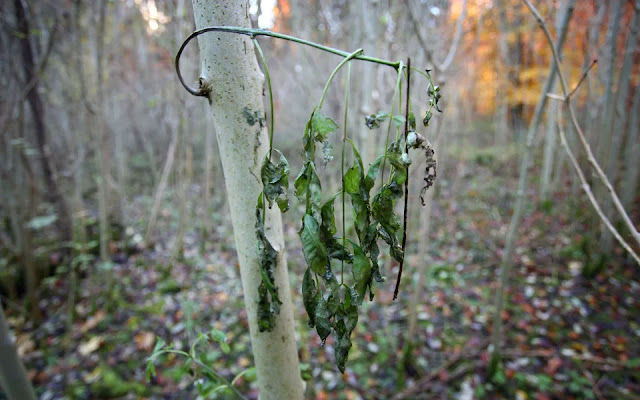
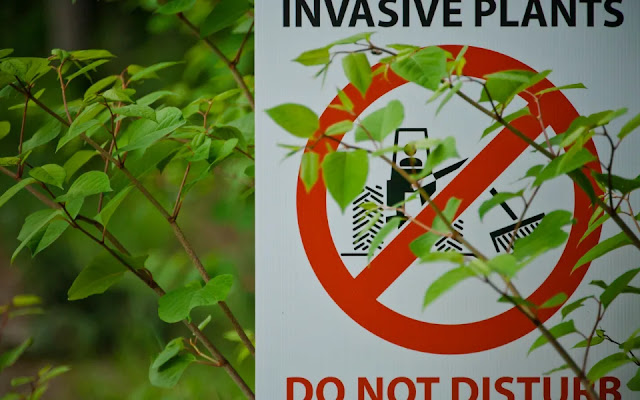




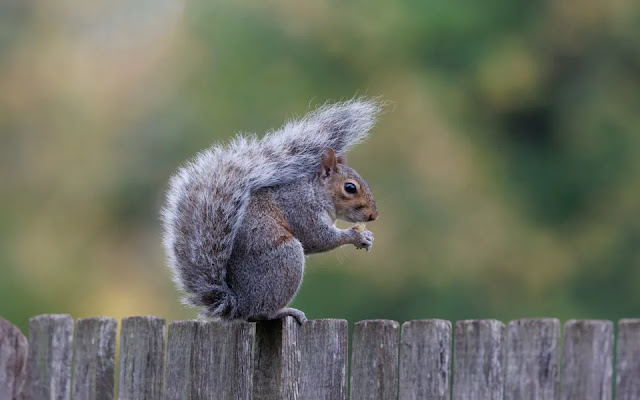


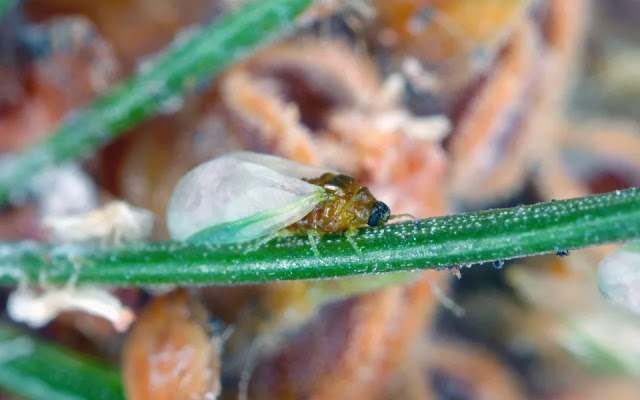
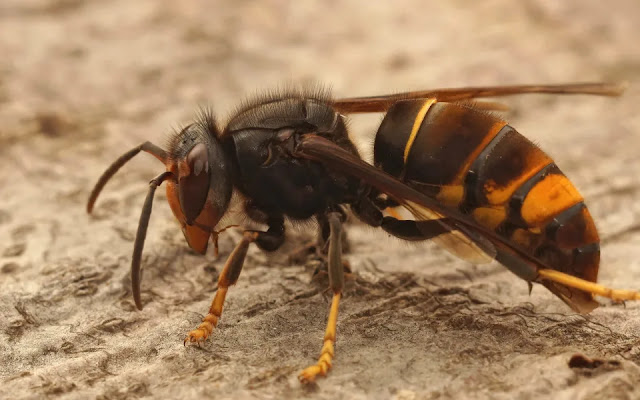






No comments:
Post a Comment